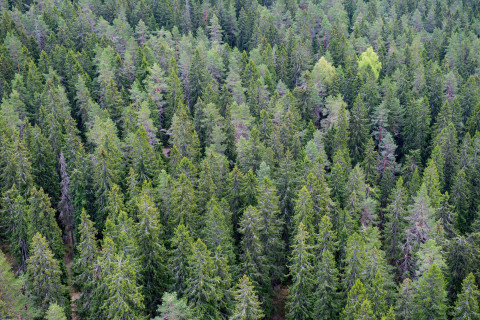TRANSFOR-M is an international, two-year Master's degree programme where students obtain one degree from the University of Eastern Finland and one from a Canadian university.
Running since 2011, the degree programme has so far been more popular among international students than Finnish ones.
“Our domestic students haven’t perhaps understood the benefits of this programme yet,” says Marjoriitta Möttönen, the programme’s Coordinator, from the School of Forest Sciences
“The degree programme is very attractive. European students do not need to pay tuition fees in Canada based on a specific programme agreement. The partner universities are the field’s leading institutions, and it takes roughly the same time to graduate as from a regular forestry MSc programme,” says Viivi Valkonen, one of the programme’s recent graduates.
Valkonen has already found employment and now works on the Healthy Step Towards Nature project, which is a joint initiative by the WWF and the Finnish Allergy, Skin and Asthma Federation. However, she looks fondly back on her time studying in Finland and Canada.
“Studying forest sciences has been a clear choice for me ever since the beginning. I grew up in the countryside and I enjoy spending time in forests, since I do orienteering as a hobby. I completed my matriculation examination in 2014, followed by a BSc in Agriculture and Forestry from the University of Eastern Finland. Then I heard about this programme and spent a year at the University of Alberta in Edmonton,” Valkonen says.
“The University of Alberta is a global leader in our field. The quality of education and the facilities were truly outstanding. The introductory orientation was extremely well-organised, and everyone was appointed a personal tutor who was available to meet us when necessary,” she says.
“The language of instruction was English, which really wasn’t my strong suit when I went there. However, my language skills gradually improved without me even noticing it. Five Finnish students had studied there before me, but there were no Finns at the same time as I was there.”
Hiking on the Rocky Mountains and exploring Californian nature
In the programme, it was possible to specialise in, e.g., forest ecology, forest conservation, silviculture or forest economy. The selection of courses was extensive, and lectures were mandatory. All completed courses were transferred towards the degree.
“Discussion in the lectures was much more active than in my home university. Courses awarding 9 ECTS would last the entire semester, and they required a lot of work, such as presentations, essays, weekly assignments and exams.”
It was easy to get to know other students in the university’s dorm and in different clubs supported by the university.
“I was involved in the Outdoors Club, which was truly great. The club organised various nature excursions, including a trip to the Rocky Mountains, and it was also possible to rent affordable mountaineering gear from them,” Valkonen says.
Particularly memorable was a Christmas break when a bus load of students headed out to California for a couple of weeks.
“We spent half the time in the desert and the other half on the beach. We slept in a tent and carried our own food and gear. We hiked, climbed and surfed, which was amazing,” she says.
Biodiversity needs to be protected
After a year abroad, Valkonen returned to her home university.
“At the University of Eastern Finland, one gets a broad picture of the forest sector, especially boreal forests and conservation of species in nature, which I’m also interested in. I did my internship for the WWF, where I focused on alien species and their mitigation, among other things.”
Valkonen wrote her Master’s thesis on the endangered Great crested newt, which can only be found in certain few areas in eastern Finland.
“Great crested newt larvae live in small ponds before they develop lungs. Felling makes the habitats of adult newts increasingly restricted and can cause local extinction. Climate change, on the other hand, increases water temperatures and dries out ponds.”
“I collected my material alone in the woods: I captured, photographed and released Great crested newts, and I slept in my car on these trips,” Valkonen says.
“Biodiversity depletion is a cause of great concern. In Finland, too, species living in our forests become endangered all the time. Forest use should pay attention to both small- and large-scale structural diversity so that forests could remain habitable for all our species also in the future.”
In the photo: “The University of Alberta is a leading institution in this filed,” Viivi Valkonen says.
In the photo: The Californian nature, too, became familiar during the year. Viivi Valkonen in the photo.
Text: Marianne Mustonen
Photos: Viivi Valkonen



